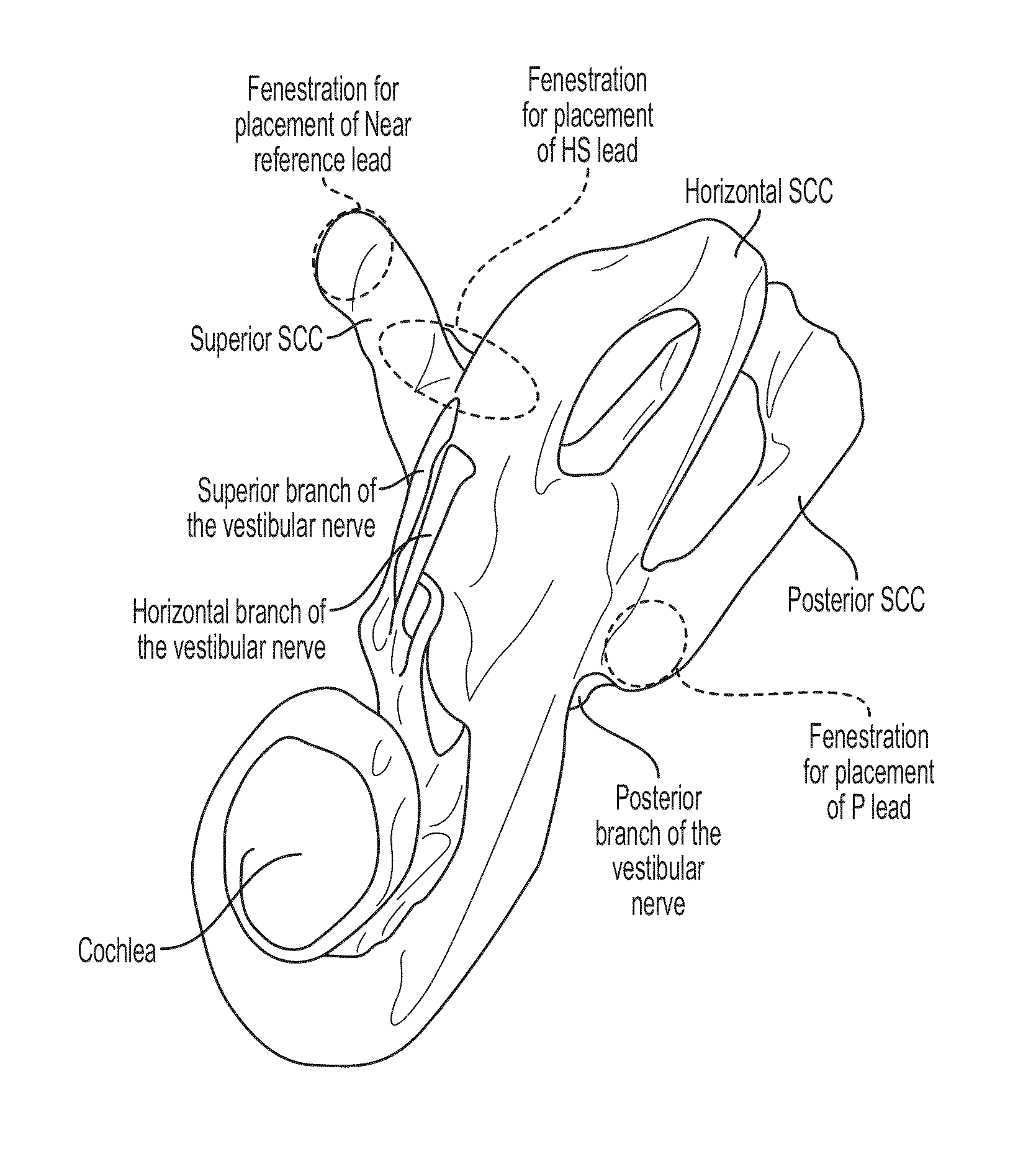Implantable vestibular prosthesis
a technology of vestibular prosthesis and implantable parts, which is applied in the field of implantable vestibular prosthesis, can solve the problems of insufficient treatment, high acceleration, and high frequency strategy failure, and achieve the effects of reducing the number of patients
- Summary
- Abstract
- Description
- Claims
- Application Information
AI Technical Summary
Benefits of technology
Problems solved by technology
Method used
Image
Examples
example
Safe Direct Current Stimulation
[0135]The present state of the art in vestibular prosthesis technology can only excite activity. This poses a major problem, because a vestibular prosthesis implanted in only one ear can therefore only accurately encode quick head rotations toward that ear by exciting nerve activity. During head rotations in the opposite direction, the prosthesis would ideally inhibit nerve activity, conveying information about the head rotation to the brain. However, this is not possible with the present state of the art. Attempts to simulate inhibition via withdrawal of excitation from above-normal baseline levels have resulted in suboptimal outcomes.
[0136]Generally, direct current (DC) stimulation cannot be used in chronically implanted neural prostheses, because it engenders irreversible electrochemical reactions at the metal-saline interface, liberating toxic substances and corroding the electrode. This is a common problem for all chronically implanted stimulating...
PUM
 Login to View More
Login to View More Abstract
Description
Claims
Application Information
 Login to View More
Login to View More - R&D
- Intellectual Property
- Life Sciences
- Materials
- Tech Scout
- Unparalleled Data Quality
- Higher Quality Content
- 60% Fewer Hallucinations
Browse by: Latest US Patents, China's latest patents, Technical Efficacy Thesaurus, Application Domain, Technology Topic, Popular Technical Reports.
© 2025 PatSnap. All rights reserved.Legal|Privacy policy|Modern Slavery Act Transparency Statement|Sitemap|About US| Contact US: help@patsnap.com



